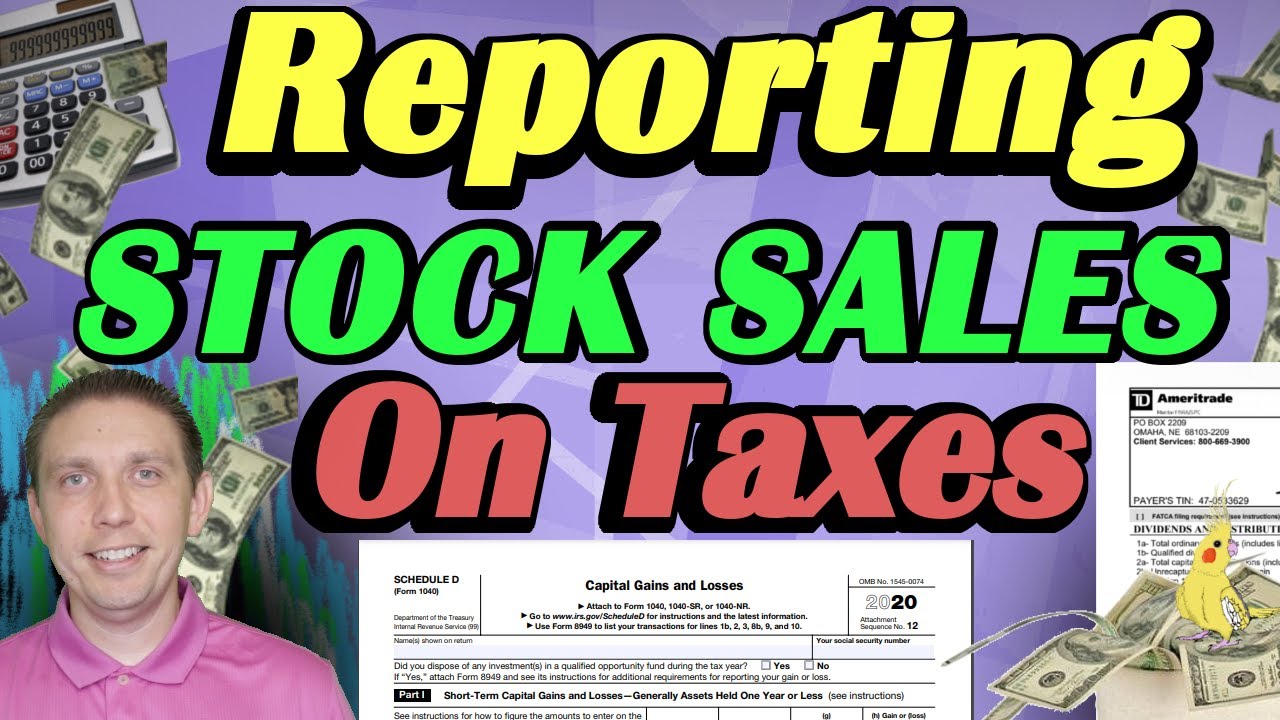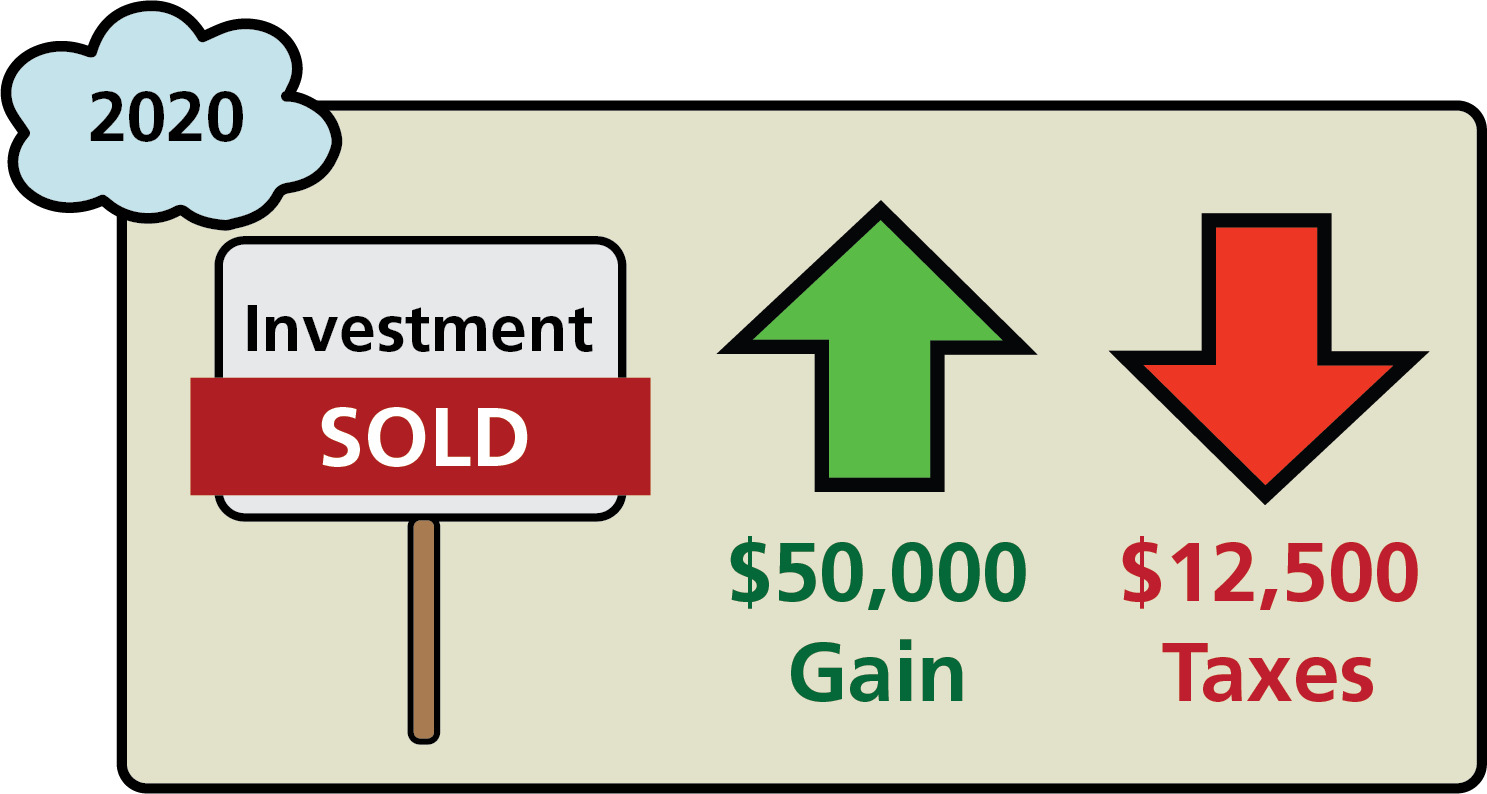Introduction
When it comes to filing taxes, reporting your investment income accurately is essential to ensure compliance with tax laws and avoid any potential penalties or audits. The Internal Revenue Service (IRS) requires individuals to report various types of investment income, including dividends, interest, capital gains, rental income, and income from partnerships or S corporations.
Knowing which investment income to report and understanding the correct forms to use can be a complex process. This article will guide you through the necessary steps and forms required to report your investments accurately while filing your taxes.
Before diving into the specific forms and steps, it’s important to note that the reporting requirements may vary depending on your investment activities and the type of investments you hold. It’s always a good idea to consult with a tax professional or utilize tax software to ensure you meet all necessary reporting requirements.
Properly reporting your investment income not only ensures compliance with the IRS but also helps you take advantage of any eligible deductions, credits, or tax breaks that may be available to you. So, let’s explore the various aspects of reporting investment income while filing your taxes.
Determining which investment income to report
Before you begin reporting your investment income, it’s important to determine which types of income are taxable and need to be reported on your tax return. Understanding the different categories of investment income will help you accurately assess your tax obligations.
The first step is to identify income streams that are considered taxable. Some common forms of taxable investment income include:
- Dividends: If you received dividends from stocks, mutual funds, or other investments throughout the year, you will generally need to report them as taxable income. Dividends can be qualified or nonqualified, depending on various factors such as the holding period and type of investment.
- Interest Income: Interest earned from savings accounts, certificates of deposit (CDs), bonds, or other investments is generally taxable. This includes both taxable and tax-exempt interest.
- Capital Gains: When you sell an investment such as stocks, bonds, or real estate and make a profit, it results in a capital gain that may be subject to taxation. Short-term capital gains, for investments held less than a year, are typically taxed at a higher rate than long-term capital gains.
- Rental Income: If you own rental properties and generate income from them, it is generally considered taxable income. You must report the rental income along with any related expenses on Schedule E of your tax return.
- Income from partnerships or S corporations: If you are a partner in a partnership or a shareholder in an S corporation, any income or distributions you receive from these entities is usually taxable and must be reported on your tax return.
It’s important to note that there may be additional investment income sources that are specific to your situation. For instance, if you have investments in foreign countries, special reporting rules may apply. Additionally, certain types of investments, such as tax-exempt or tax-deferred accounts, may have specific reporting requirements.
By understanding the different types of investment income and their taxability, you can accurately identify which income sources need to be reported on your tax return. Now that you know which investment income to report, the next step is to understand how to report each category appropriately.
Reporting dividends and interest income
Dividends and interest income are common forms of investment earnings that you may receive throughout the year. It’s important to know how to report these types of income accurately on your tax return.
Dividends: Dividends are typically reported on Form 1099-DIV, which you should receive from the financial institution or entity that paid you the dividends. The form provides details on the type of dividends you received, such as qualified or nonqualified dividends. You’ll need to report this information on Schedule B of your tax return.
Qualified dividends are subject to lower tax rates, while nonqualified dividends are taxed at ordinary income tax rates. To ensure accurate reporting, review the Form 1099-DIV and transfer the necessary information to the appropriate sections of your tax return.
Interest Income: Interest income can come from various sources, including bank accounts, bonds, or loans that you have made to others. You should receive a Form 1099-INT or Form 1099-OID from the financial institution or individual who paid you the interest.
Report the interest income on Schedule B of your tax return. It’s important to note that some types of interest income, such as interest earned from tax-exempt bonds, may not be taxable at the federal level. However, you should still report them on your tax return to track your overall income accurately.
If you have multiple 1099-DIV or 1099-INT forms, make sure to consolidate the information from all forms when reporting on your tax return. In some cases, you may need to attach additional forms or schedules to provide further details or calculations. Double-check that you have entered the correct amounts and have reported all relevant dividends and interest income on your tax return.
By accurately reporting dividends and interest income on the appropriate forms, you can ensure compliance with tax laws and decrease the chances of receiving an IRS notice or audit.
Reporting capital gains and losses
Capital gains and losses arise when you sell an investment, such as stocks, bonds, or real estate, for a profit or a loss. It’s important to understand how to report these gains and losses accurately on your tax return.
When you sell an investment, you will receive a Form 1099-B from your brokerage or financial institution. The form will provide information about the sale, including the proceeds from the sale and the cost basis of the investment.
Reporting Capital Gains: If you have a capital gain from the sale of an investment, you will report it on Schedule D of your tax return. Depending on the holding period, the gain may be classified as short-term or long-term.
Short-term capital gains, from investments held for one year or less, are generally taxed at your ordinary income tax rate. Long-term capital gains, from investments held for more than one year, may be subject to lower tax rates.
Transfer the information from Form 1099-B to Schedule D, ensuring that you accurately report each transaction. If you have multiple transactions, you may need to attach additional forms or worksheets to provide a comprehensive overview of your capital gains.
Reporting Capital Losses: If you have a capital loss from the sale of an investment, you can use it to offset capital gains and potentially reduce your overall tax liability. Report your capital losses on Schedule D as well.
If your capital losses exceed your capital gains, you can utilize the excess losses to offset other income, subject to certain limitations. This is known as a capital loss carryover. Keep track of any unused capital losses, as you may be able to carry them forward to future years and utilize them to offset future capital gains or income.
It’s important to accurately report all capital gains and losses on your tax return, as failure to do so may result in penalties or trigger an IRS audit. Take the time to review your Form 1099-B, ensure proper classification of short-term and long-term gains, and report the information on Schedule D accordingly.
By understanding the reporting requirements for capital gains and losses, you can maximize your tax efficiency while complying with tax regulations.
Reporting rental income
Rental income is an important source of investment income for many individuals who own properties and lease them to tenants. If you receive rental income, it is essential to understand how to report it accurately on your tax return.
Recording Rental Income: Rental income should be reported on Schedule E of your tax return. You should report the total rental income you received from all your rental properties during the tax year.
It’s important to keep detailed records of your rental income, including dates and amounts received from each tenant. In addition to the rental payments, you may need to report any additional income related to the property, such as fees for services or amenities provided.
Expense Deductions: Along with rental income, you can also deduct certain expenses associated with your rental property. Allowable deductions may include property taxes, mortgage interest, insurance premiums, repairs and maintenance, property management fees, and depreciation.
Keep in mind that you can only deduct expenses that are directly related to the rental property. Personal expenses that you incur are not eligible for deduction.
It’s crucial to maintain thorough documentation of all expenses related to your rental property. Keep receipts, invoices, and any other supporting documents to substantiate the expenses you claim on your tax return.
Passive Activity Loss Limitations: If you actively participate in managing your rental property, you may be able to deduct up to $25,000 in rental real estate losses. However, there are income limitations that apply. Consult the IRS guidelines or a tax professional to determine if you qualify for this deduction.
In cases where rental expenses exceed rental income, resulting in a loss, you may be able to offset other types of income, subject to specific rules and limitations.
Ensure accuracy in reporting rental income and expenses to avoid potential IRS audits or penalties. Keep organized records and consult with a tax professional to determine the appropriate deductions applicable to your rental property.
Reporting income from partnerships or S corporations
If you receive income from a partnership or S corporation, it’s important to understand how to report this income on your tax return. Partnerships and S corporations are known as pass-through entities, meaning the income generated by the entity passes through to the individual shareholders or partners.
Income from Partnerships: If you are a partner in a partnership, you will receive a Schedule K-1 (Form 1065) from the partnership. The Schedule K-1 outlines your share of the partnership’s income, deductions, credits, and other items.
Report the income stated on the Schedule K-1 on your individual tax return. Typically, this is done by transferring the information to specific sections of your tax return, such as Schedule E or Form 1040.
Income from S Corporations: If you are a shareholder in an S corporation, you will receive a Schedule K-1 (Form 1120S) from the corporation. The Schedule K-1 provides details of your share of the corporation’s income, deductions, and other items.
Transfer the information from the Schedule K-1 to your individual tax return. Like partnership income, you will typically report it on Schedule E or Form 1040.
Both partnering in a partnership and owning shares in an S corporation require proper documentation and record-keeping. It’s crucial to maintain accurate records and retain the Schedule K-1 forms for reference and potential future inquiries.
As a partner or shareholder, you may also be eligible for additional deductions or credits, such as self-employment tax deductions or investment expense deductions. Consult with a tax professional to ensure you are taking advantage of all available tax benefits.
Reporting income from partnerships or S corporations accurately is crucial to stay compliant with tax laws and avoid any potential penalties or audits. Be sure to review the Schedule K-1 documents carefully, transfer the necessary information to your tax return correctly, and keep a record of the forms for your records.
Filing the appropriate forms
When it comes to reporting your investment income while filing taxes, using the appropriate forms is essential to ensure accurate reporting and compliance with tax regulations. The specific forms you need to file will vary depending on the type of investment income you have and your individual circumstances.
Here are some common forms you may need to consider:
- Form 1099-DIV: This form is used to report dividends received during the tax year. If you received dividends from stocks, mutual funds, or other investments, you should receive this form from the financial institution or entity that paid you the dividends.
- Form 1099-INT: This form is used to report interest income. It is typically received from banks, credit unions, or other financial institutions that paid you interest during the year.
- Form 1099-B: This form is used to report the proceeds from the sale of investments, as well as their cost basis. You should receive this form from your brokerage or financial institution.
- Schedule D: This schedule is used to report capital gains and losses from the sale of investments. It is where you calculate and report the net capital gain or loss for the tax year.
- Schedule E: This schedule is used to report rental income and expenses from rental properties. If you have rental properties, you will report your rental income and deductions on this form.
- Schedule K-1: This form is used to report income, deductions, credits, and other items from partnerships and S corporations. If you are a partner or shareholder in these entities, you will receive a Schedule K-1 and report the information on your tax return.
In addition to these forms, you may also need to consider other schedules or forms depending on your specific situation. For example, if you have foreign investments, you may need to file Form 8938 or Form 8621 to report those investments.
It’s important to consult with a tax professional or use tax software to determine the specific forms you need to file based on your investment income. Ensure that you accurately complete each form, enter the correct information, and attach any supporting schedules or documentation as required.
By filing the appropriate forms, you can report your investment income accurately and meet your tax obligations in a compliant manner.
Reporting foreign investments
If you have investments in foreign countries, it’s important to understand the reporting requirements for these investments while filing your taxes. The IRS requires taxpayers to disclose certain foreign financial accounts and investments to ensure compliance with tax laws and prevent potential tax evasion.
Foreign Bank Accounts: If you have a financial interest in, or signature authority over, any foreign bank accounts, you may need to report these accounts on FinCEN Form 114, Report of Foreign Bank and Financial Accounts (FBAR).
The FBAR must be filed annually, separate from your tax return, if the aggregate value of your foreign accounts exceeds a certain threshold. The threshold may vary depending on your filing status and residency. Failure to file the FBAR can result in severe penalties.
Foreign Investments: Certain types of investments in foreign countries may require additional reporting on your tax return. For example, if you have investments in foreign stocks or securities, you may need to file Form 8938, Statement of Specified Foreign Financial Assets, if the value of those assets exceeds a certain threshold.
Form 8938 is filed along with your tax return and provides information about your foreign investment holdings. It is important to review the instructions for Form 8938 or consult with a tax professional to determine if this form is required for your specific situation.
Foreign Tax Credits: If you pay taxes to a foreign government on your foreign investments, you may be eligible to claim a foreign tax credit on your U.S. tax return. The foreign tax credit helps alleviate double taxation by allowing you to offset some of your U.S. tax liability with taxes paid to a foreign country.
To claim the foreign tax credit, you will generally need to file Form 1116, Foreign Tax Credit. This form calculates the amount of the credit you can claim based on the foreign taxes paid and the U.S. tax rules for foreign income.
Reporting foreign investments accurately is crucial to stay compliant with tax laws and avoid potential penalties. Make sure to research and understand the specific reporting requirements for your foreign investments and consult with a tax professional who specializes in international tax matters if needed.
Reporting tax-exempt investments
Investments that generate tax-exempt income can provide valuable tax benefits. However, it’s important to understand the reporting requirements for these investments to ensure compliance with tax laws while filing your taxes.
Tax-Exempt Interest Income: If you receive tax-exempt interest income from investments such as municipal bonds or certain government securities, you generally do not need to report this income on your federal income tax return.
Keep in mind that while you may not need to report tax-exempt interest income on your federal tax return, you may still need to report it on your state or local tax return if applicable.
It’s important to review the specific tax rules and consult with a tax professional to determine the reporting requirements for tax-exempt interest income in your jurisdiction.
Tax-Exempt Dividends: Similarly, if you receive tax-exempt dividends from investments such as tax-exempt mutual funds or qualified real estate investment trusts (REITs), you generally do not need to report these dividends as taxable income.
However, it’s essential to review the documentation accompanying these investments, such as Form 1099-DIV, to ensure accurate reporting on your tax return. The forms should clearly indicate which dividends are tax-exempt and which are taxable.
Tax-Exempt Retirement Contributions: If you contribute to tax-exempt retirement accounts such as a Roth IRA or a Health Savings Account (HSA), you generally do not need to report these contributions on your tax return.
Contributions to tax-exempt retirement accounts are made with after-tax dollars and grow tax-free, which means you may not need to report them unless you are eligible for specific deductions or credits related to these accounts.
While tax-exempt investments provide various tax advantages, it’s crucial to keep detailed records and retain all relevant documentation for your tax records. These records will help you accurately report your investments and address any potential inquiries from tax authorities.
Consult with a tax professional to ensure you fully understand the reporting requirements and tax implications of your tax-exempt investments. By reporting tax-exempt investments correctly, you can maximize your tax benefits and maintain compliance with tax laws.
Reporting tax-deferred investments
Tax-deferred investments can provide individuals with valuable opportunities to save for retirement or achieve other financial goals while potentially reducing their current tax liability. Reporting these investments correctly is crucial to ensure compliance with tax laws and fully benefit from their tax advantages.
Traditional IRA Contributions and Distributions: Contributions to a traditional IRA are often tax-deductible, meaning you can lower your taxable income for the year in which the contributions are made. However, these contributions and any associated earnings grow tax-deferred until you begin taking distributions in retirement.
On your tax return, report any deductible contributions you made to a traditional IRA on Form 1040 or Form 1040A. Additionally, if you received distributions from a traditional IRA during the year, you will need to report them as taxable income on your tax return.
401(k) Contributions and Distributions: If you participate in a 401(k) or similar employer-sponsored retirement plan, you can make contributions on a pre-tax basis, reducing your current taxable income. These contributions and any earnings also grow tax-deferred until you withdraw the funds during retirement.
Report any contributions you made to a 401(k) or other employer-sponsored retirement plan on your W-2 form. This information will be used to calculate your taxable income on your tax return.
When you receive distributions from a 401(k) or similar retirement plan, they are typically considered taxable income. You will need to report these distributions on your tax return in the year you receive them.
Other Tax-Deferred Investments: There are also other tax-deferred investment vehicles, such as annuities or certain types of insurance policies, that offer tax benefits. The reporting requirements for these investments may vary depending on the specific investment and its tax treatment.
It’s important to keep detailed records of your contributions, distributions, and any relevant documentation related to your tax-deferred investments. This includes year-end statements provided by financial institutions or plan administrators.
Consult with a tax professional to understand the specific reporting requirements for your tax-deferred investments and to ensure you take full advantage of the tax benefits they offer. By reporting tax-deferred investments correctly, you can maximize your savings and stay compliant with tax laws.
Organizing and keeping track of investment information
When it comes to managing your investments and reporting them accurately on your tax return, organization is key. Keeping track of important investment information can help simplify the tax filing process and ensure you don’t miss any crucial details. Here are some tips to help you stay organized:
Consolidate Investment Documents: Gather all investment-related documents, such as brokerage statements, 1099 forms, and year-end summaries, in one place. Create a dedicated folder or file to keep these documents organized and easily accessible.
Record Transactions and Income: Maintain a record of investment transactions, including buys, sells, and any income received such as dividends or interest. You can use a spreadsheet, financial software, or even a simple notebook to log these details.
Track Cost Basis: Keep track of the cost basis for each investment, especially when it comes to capital gains and losses. This information is crucial for accurately reporting your investment gains or losses on your tax return.
Monitor and Account for Reinvested Dividends: If you have investments that automatically reinvest dividends or capital gains, ensure that you account for these reinvestments when reporting your investment income. It’s important to include any additional shares or units acquired through reinvestment in your cost basis calculations.
Organize Rental Property Information: If you have rental properties, maintain detailed records of rental income, expenses, and any relevant documentation such as lease agreements or maintenance receipts. A separate folder or digital file for each property can help streamline the reporting process.
Keep Tax Forms and Summaries: Keep copies of all tax-related forms, such as Schedule K-1 or Form 1099, received from investments or financial institutions. These forms provide important information that you will need when preparing your tax return.
Stay Informed: Stay updated on any changes in tax laws or reporting requirements related to your investments. Tax laws can change from year to year, so it’s essential to stay informed and adjust your reporting accordingly.
By staying organized and keeping track of investment information, you can simplify the tax reporting process and ensure accurate reporting of your investment income and transactions. Should you have any doubts or complexities regarding your investments, it’s always wise to consult with a tax professional to ensure compliance and optimize your tax strategy.
Conclusion
Reporting your investment income accurately while filing your taxes is crucial for staying compliant with tax laws and maximizing your tax benefits. By understanding the different types of investment income and their reporting requirements, you can ensure that you report your investments correctly.
Determining which investment income to report is the first step. Whether it’s dividends, interest income, capital gains and losses, rental income, or income from partnerships or S corporations, understanding the specific reporting rules for each category is essential.
Using the appropriate forms is crucial for accurate reporting. From Form 1099-DIV and Form 1099-INT for reporting dividends and interest income to Schedule D for reporting capital gains and losses, knowing which forms to use and how to complete them helps ensure proper reporting.
Additionally, for specific investment types, such as foreign investments, tax-exempt investments, and tax-deferred investments, understanding the unique reporting requirements is imperative to comply with tax regulations.
Keeping track of investment information and maintaining organized records is a valuable practice. This includes consolidating investment documents, recording transactions and income, tracking cost basis, monitoring reinvested dividends, organizing rental property information, and retaining tax forms and summaries.
While this article provides a comprehensive overview, it’s important to note that tax laws and reporting requirements can vary based on individual circumstances and jurisdictional regulations. Consulting with a tax professional or utilizing tax software can help ensure accuracy and optimize your tax strategy.
By following these guidelines and staying informed about changes in tax laws, you can confidently report your investment income while filing your taxes. Doing so will not only ensure compliance with tax regulations but also enable you to take advantage of eligible deductions, credits, and tax benefits, optimizing your financial situation.

























